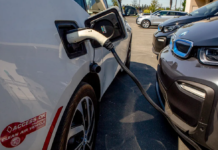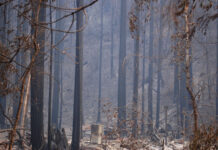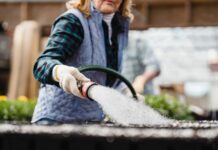The first two months of 2022 are shaping up to be the driest January and February in California history, prompting state officials to warn of dire water conditions ahead.
“There’s no precipitation forecast through the remainder of February. And there’s very little precipitation in the long-range forecast for March,” Erik Ekdahl, a deputy director with the State Water Resources Control Board, said at a board meeting Tuesday. “All this is pointing to, again, some pretty dire conditions statewide for drought.”
After record-setting storms in October and then December, the past six weeks — usually among the wettest months in California — have seen precipitation totals plateau at roughly half the yearly average in the state’s major watersheds.
The dry spell follows the driest year in California since 1924, as aridity continues to dominate the West.
The prolonged drought, which began in early 2020, leaves many water suppliers leaning more on their stored water supplies or shifting to other sources, such as groundwater.
Jennifer Pierre, general manager of the State Water Contractors, an association of water agencies in Southern and Northern California and the San Joaquin Valley that receive supplies from the State Water Project, called the storms late last year “a blip” that meant little to California’s water supplies.
The agencies are getting 15% of their requested supplies from the state aqueduct, which carries water from Northern California rivers south. Initially, the allocations were set at zero, which meant deliveries would only cover enough for public health and safety.
For residents of the Silicon Valley, the conditions could mean tightening restrictions and increasing rebates to reduce water use. In San Jose, customers who exceed limits— based on a 15% cut in amounts of water they used in 2019 — already have to pay extra fees.
The drought has collided with earthquake retrofits that required almost completely draining the area’s largest reservoir, knocking out more than half of the storage capacity serving 2 million people in and around San Jose.
In June, Valley Water’s board mandated a 15% cut to water use from 2019 levels, to be implemented by the local water agencies it supplies. Board chair Gary Kremen said he wouldn’t be surprised to see an update to the restrictions and rebate programs come up for another vote.
“You use the word dire,” Kremen said. “But for us, it’s kind of worse than dire.”
The storms early in the rainy season mean California’s water supplies are in better shape now than last year, said state climatologist Michael Anderson. Nearly the entire state is in moderate drought, with about two-thirds in severe drought. But if precipitation totals hold, he expects this year to round out the driest three years on record — even drier than the three-year span between 2013 and 2015 during the last record-breaking drought.
“The challenge is, this is year three of the drought rather than year two,” Anderson said. “And in terms of a three-year period, we’re likely going to set a new record for a three-year window of drought.”
The snowpack, too, hasn’t increased. A critical water supply, the Sierra Nevada snowpack was measured at 72% of normal for Feb. 15, but only 55% of the seasonal average measured on April 1. And in parts of the state, the snow is already melting.
“You’re in this window where you’re still expecting to be building (snow)pack, but it’s already starting to melt,” Anderson said. “The challenge will be how much snowpack makes it to spring, and how much shows up in the reservoirs.”
Anderson is keeping an eye on the months ahead, and hopes that March will bring more rain and snow than anticipated. A big question will be how much runoff from snow melt in the Sierra Nevada will reach California’s reservoirs, which saw substantially less runoff than expected last year.
“The good news is there’s room in the reservoirs to capture what does make it to the streams and come down,” he said. “The challenge is that if we’re dry this early, the demands for water start earlier.”
Most of the state’s reservoirs are sitting below historic averages despite the December deluge, with some notable exceptions, such as Folsom Reservoir — “the breadwinner of the storms,” Michael Macon, who works with the water board’s Division of Water Rights, said Tuesday.
Lake Shasta is about half a million acre-feet — enough to supply 1.5 million households for one year — short of where it stood last year. Oroville has climbed above last year’s levels, but the amount of water flowing out is starting to match water flowing in following a dry January, Macon said.
Looking ahead, Anderson says it’s a matter of waiting and watching whether spring brings more rain and snow, and how quickly summer heats up.
“The challenge then becomes, well, what does summer look like? Does it heat up really fast? Do we end up with a lot of heat waves?” he said. “Or do we get a little bit of a break with some cooler weather?”
SoCoNews is partnering with CalMatters to provide a wider variety of news that gives our readers national and regional context for issues facing our local communities.








